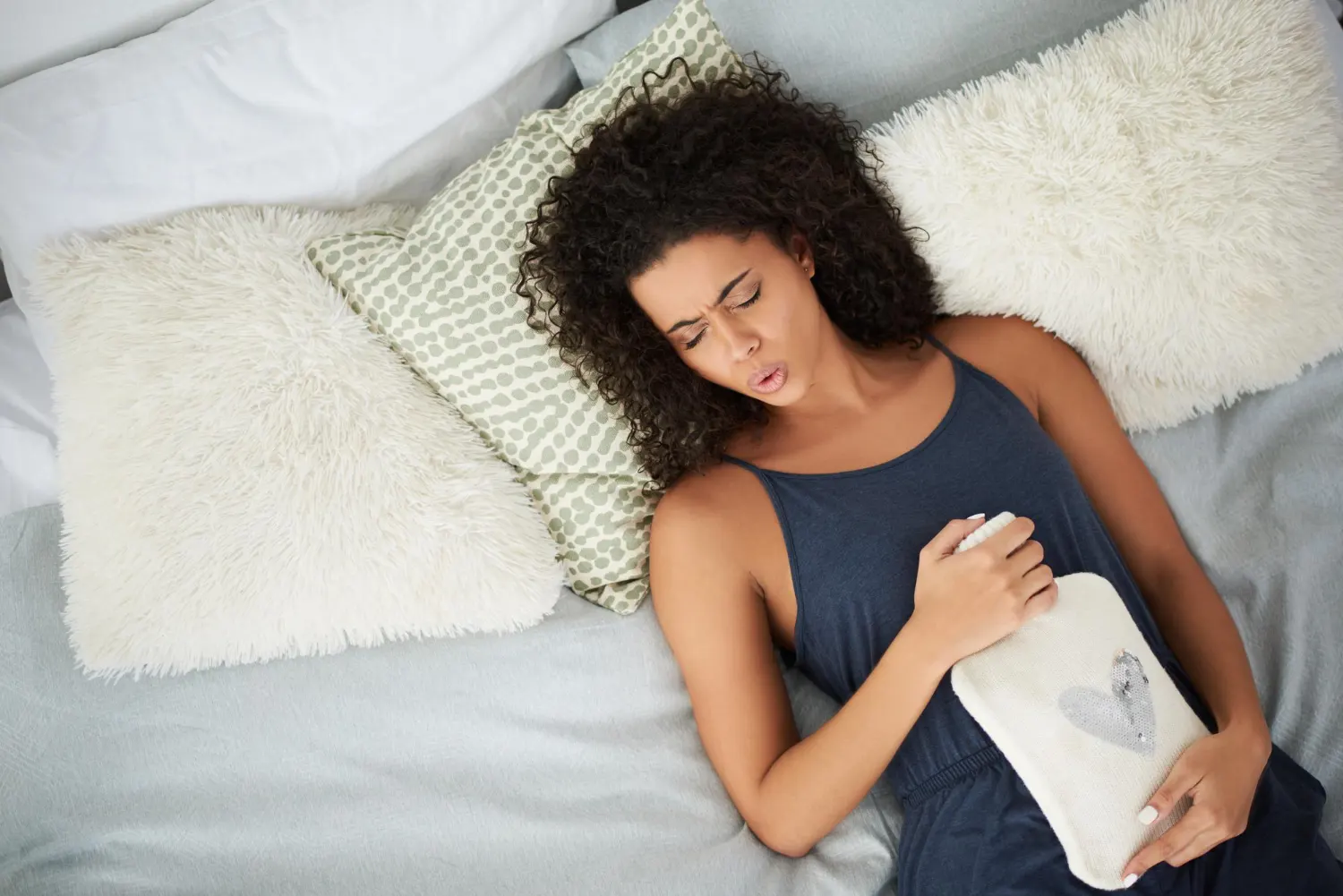Premenstrual syndrome (PMS) is a reality many women face each month, often marked by a mix of physical discomfort and emotional turbulence. From bloating and breast tenderness to mood swings and fatigue, PMS symptoms can disrupt daily routines and diminish overall well-being. While pharmaceutical treatments are available, they often come with side effects that many women prefer to avoid. Increasingly, natural remedies have gained traction as a gentler, holistic approach to managing PMS.
This guide explores how natural remedies—including dietary changes, herbal supplements, stress reduction techniques, and lifestyle modifications—can offer relief. Grounded in recent research and practical insights, this article provides a comprehensive look at how women can manage PMS more effectively and naturally.
In This Article
Understanding PMS: Causes and Symptoms
PMS is primarily driven by the hormonal fluctuations that occur during the menstrual cycle. In the luteal phase—after ovulation and before menstruation—estrogen and progesterone levels fluctuate dramatically. These hormonal shifts affect neurotransmitters such as serotonin, which can influence mood, appetite, and sleep patterns.
Common Symptoms of PMS
| Physical Symptoms | Emotional & Behavioral Symptoms |
|---|---|
| Bloating | Mood swings |
| Breast tenderness | Irritability or anger |
| Headaches | Anxiety or tension |
| Fatigue | Depressed mood |
| Joint or muscle pain | Difficulty concentrating |
| Acne | Sleep disturbances |
While up to 75% of menstruating women experience some symptoms of PMS, around 20–30% report symptoms significant enough to interfere with daily life[^16].
Understanding that PMS is a multifactorial condition is essential. Stress, poor diet, lack of physical activity, and underlying health issues can exacerbate symptoms. This complexity is why a multifaceted natural approach can be so effective.
Dietary Adjustments for PMS Relief
What you eat directly influences hormone balance, inflammation levels, and mood regulation—all crucial factors in PMS management. Adopting a PMS-friendly diet can help reduce symptom severity and promote a more balanced menstrual cycle.
Nutritional Foundations for PMS Relief
1. Whole Foods for Hormonal Balance
A diet rich in fruits, vegetables, whole grains, and lean proteins supports stable blood sugar levels, which helps mitigate mood swings and cravings.
2. Calcium and Magnesium Intake
Studies have shown that women with adequate calcium and magnesium intake experience fewer mood-related PMS symptoms[^23]. Leafy greens, nuts, seeds, and fortified plant milks are excellent sources.
3. Reduce Inflammatory Foods
Minimizing sugar, caffeine, alcohol, and salty or processed foods can reduce bloating, irritability, and fatigue.
4. Omega-3 Fatty Acids
Found in flaxseeds, walnuts, and fatty fish, omega-3s have been associated with lower levels of prostaglandins, compounds that can cause cramps and inflammation[^22].
| Food Group | Recommended Choices | Foods to Limit |
|---|---|---|
| Carbohydrates | Whole grains (quinoa, oats, brown rice) | White bread, refined pasta |
| Proteins | Lentils, tofu, fish, lean poultry | Red meat, processed meats |
| Fats | Avocados, olive oil, nuts, seeds | Trans fats, hydrogenated oils |
| Beverages | Herbal teas, water | Caffeinated sodas, alcohol |
By focusing on nutrient-dense foods and staying well-hydrated, women can significantly improve their PMS experience.
Herbal Supplements: Ancient Remedies with Modern Backing
For centuries, herbal medicine has been used to alleviate menstrual discomfort. While some remedies lack robust clinical trials, several have shown promising results in modern studies.
Key Herbal Remedies for PMS
Chasteberry (Vitex agnus-castus)
This Mediterranean plant is one of the most researched herbal remedies for PMS. It is believed to work by regulating prolactin levels and balancing estrogen and progesterone. Studies have shown that Vitex can reduce breast tenderness, mood swings, and irritability[^17].
Evening Primrose Oil
Rich in gamma-linolenic acid (GLA), this supplement is often used to reduce breast pain, inflammation, and mood-related symptoms. While evidence is mixed, anecdotal reports and smaller trials suggest it can be effective[^21].
St. John’s Wort
Primarily used to combat mild to moderate depression, St. John’s Wort may also help with PMS-related mood disturbances. However, it can interact with other medications, including hormonal contraceptives[^1].
Magnesium and Vitamin B6
When taken together, magnesium and B6 have been found to alleviate PMS-related anxiety, irritability, and fatigue[^24]. They help regulate neurotransmitters and support nerve function.
| Herbal Supplement | Primary Benefits | Precautions |
|---|---|---|
| Chasteberry (Vitex) | Hormonal regulation, mood stabilization | Avoid in pregnancy; may interfere with OCPs |
| Evening Primrose Oil | Reduces inflammation, breast tenderness | May affect blood clotting |
| St. John’s Wort | Improves mood, reduces anxiety | Drug interactions possible |
| Magnesium + Vitamin B6 | Mood support, fatigue reduction | Excess may cause digestive upset |
Always consult with a healthcare provider before starting new supplements, especially if you’re on medication or have underlying conditions.
Stress Reduction Techniques: Calming the Cycle
Chronic stress disrupts hormone balance by increasing cortisol levels, which in turn can worsen PMS symptoms. Natural stress-reduction practices not only ease emotional distress but may also improve physical symptoms like cramps and fatigue.
Effective Mind-Body Approaches
Exercise
Regular movement increases endorphins—natural mood lifters—and reduces cortisol. Low-impact exercises like walking, swimming, and yoga are especially beneficial for PMS[^2].
Meditation and Mindfulness
Practicing mindfulness can decrease the intensity of mood swings and irritability. Even ten minutes a day of guided meditation can make a noticeable difference.
Aromatherapy
Scents such as lavender, bergamot, and clary sage have been associated with lower anxiety and improved sleep. Aromatherapy massage has been shown to significantly reduce PMS symptoms in several small trials[^1].
Journaling
Keeping a symptom journal can help identify specific PMS triggers—dietary, emotional, or environmental—and lead to more personalized management strategies.
| Stress-Relief Practice | Key Benefits | Best Time to Practice |
|---|---|---|
| Yoga or gentle exercise | Endorphin boost, improved sleep | Daily, especially during luteal phase |
| Guided meditation | Reduced anxiety and mood stabilization | Morning or before bed |
| Aromatherapy | Relaxation, improved emotional resilience | During stressful moments or sleep routine |
| Journaling | Self-awareness, trigger identification | Daily or when symptoms are severe |
Incorporating one or more of these into your weekly routine can lead to sustained improvements in both mental and physical PMS symptoms.
Lifestyle Changes to Support Hormonal Health
Lifestyle factors—including sleep, physical activity, and toxin exposure—directly impact the endocrine system. By making strategic adjustments, women can better regulate their menstrual cycles and reduce PMS discomfort.
Sleep and Circadian Rhythms
Poor sleep quality disrupts the body’s hormonal rhythm. Women with irregular or insufficient sleep often report more severe PMS symptoms. Aim for 7–9 hours of restful sleep per night, and try to maintain a consistent sleep-wake cycle.
Limit Environmental Estrogens
Certain chemicals in plastics, pesticides, and personal care products can mimic estrogen in the body, throwing hormone levels off balance. Opt for BPA-free containers, organic produce, and clean-label skincare when possible.
Physical Activity
Consistent physical activity, even moderate, can reduce PMS-related pain, improve mood, and regulate menstrual cycles. Studies show that women who exercise regularly experience fewer and less severe PMS symptoms[^22].
Acupuncture and Alternative Therapies
Emerging evidence suggests acupuncture may help relieve PMS by stimulating neurotransmitters and improving blood flow. While not universally effective, many women report subjective improvements.
Conclusion
PMS is a complex condition, but it doesn’t have to control your life. By turning to natural remedies—ranging from dietary changes and herbal supplements to mindfulness practices and lifestyle shifts—many women find meaningful relief from the monthly discomfort of PMS. These approaches not only address symptoms but also support overall hormonal health, resilience, and well-being.
It’s important to remember that no two bodies are the same. What works for one woman may not work for another. However, through patience, self-awareness, and evidence-based experimentation, natural strategies can be a powerful part of your PMS management toolkit.
References
- Healthline. (n.d.). 10 Natural Treatment Options for PMDD. Retrieved from https://www.healthline.com/health/womens-health/pmdd-natural-treatment
- Continental Hospitals. (n.d.). 10 Effective Natural Remedies for Premenstrual Syndrome Relief. Retrieved from https://continentalhospitals.com/blog/10-effective-natural-remedies-for-premenstrual-syndrome-relief/
- College of Naturopathic Medicine. (2020, September 21). How to Manage PMS Naturally. Retrieved from https://www.naturopathy-uk.com/news/news-cnm-blog/blog/2020/09/21/how-to-manage-pms-naturally/
- Women’s Health.gov. (n.d.). Premenstrual Syndrome (PMS). Retrieved from https://www.womenshealth.gov/menstrual-cycle/premenstrual-syndrome
- Briden, L. (n.d.). Top 6 Natural Treatments for Premenstrual Mood Symptoms. Retrieved from https://www.larabriden.com/top-6-natural-treatments-for-premenstrual-mood-symptoms/
- MDPI. (2022). Pharmaceuticals, 15(11), 1371. https://www.mdpi.com/1424-8247/15/11/1371
- ScienceDirect. (2023). Journal of Affective Disorders, S0165032724015684. https://www.sciencedirect.com/science/article/abs/pii/S0165032724015684
- Nutrition Reviews. (2024). 83(2), 280–296. https://academic.oup.com/nutritionreviews/article/83/2/280/7659847










0 Comments